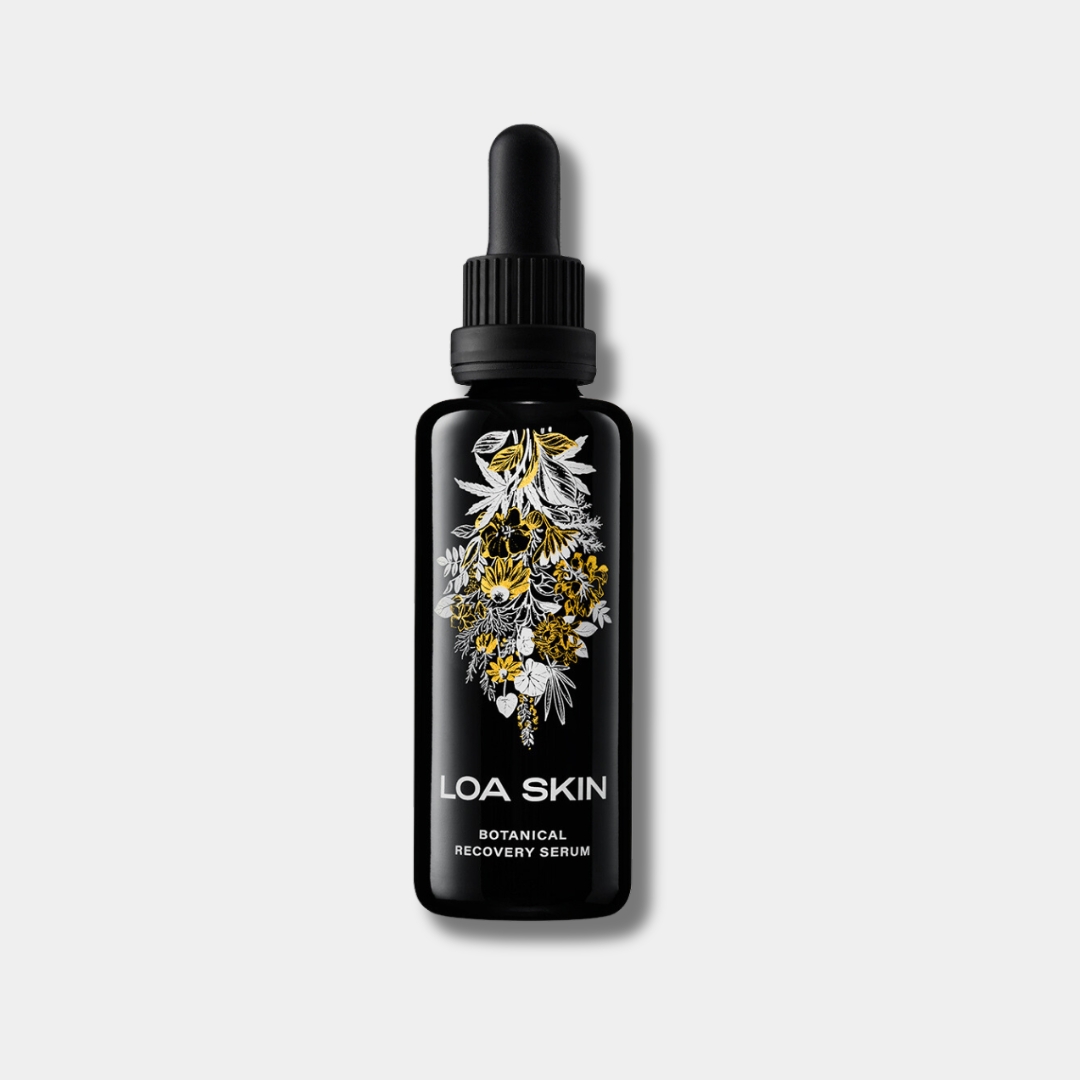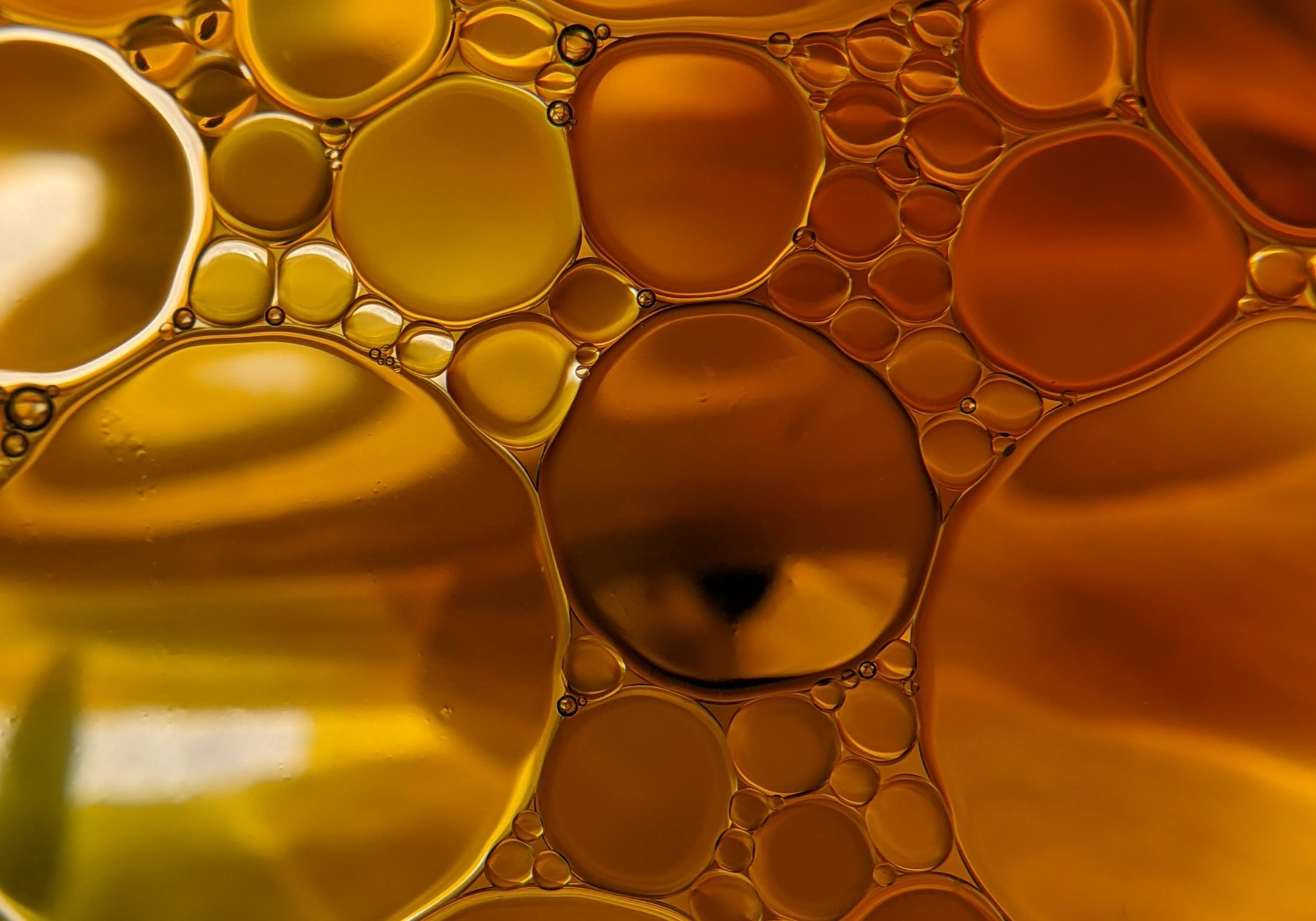
Exploring the Skin Microbiome and Its 1.5 Trillion Microbes
The gut microbiome has garnered special attention in recent years, but what about the skin microbiome?
As you'll find out, the skin microbiome is simply vital for the health of our skin and is responsible for the severity of many different inflammatory conditions.
The functions of the skin microbiome and its 1.5 trillion microbes

What is the skin microbiome?
Human skin is home to roughly 1.5 trillion microbes, also known as microorganisms or skin flora.
This massive colony of microorganisms makes up the skin microbiome and lives on the surface of our stratum corneum, the outermost layer of the skin's epidermis — which includes bacteria, fungi, viruses, and mites.
Yes, basically microscopic mite-like creatures live on our skin (more specifically, arthropods).
While some might perceive these microbes as gross and want to furiously wash them away, you'll find out in this article why doing just that would be a detrimental mistake.
Bacteria, in particular, dominate our skin's microbiome communities which is why we often see them associated with common skin diseases.
Important to note — I'm not just talking about the face here. The skin microbiome, of course, extends to our entire body.
Why skin flora are important for optimal skin health
Just like any ecosystem on Earth, our skin flora form important symbiotic relationships where they serve pivotal roles for the health of our skin and bodies.
Amazingly, skin flora influences and communicates with our immune system, serving numerous benefits to our skin.
The skin microbiome serves one of the most important functions to humans — it provides the first line of defence to pathogenic invasion and injury.
Skin flora also work to prevent skin diseases and repair wounds.
Certain bacterial species in skin flora help to produce anti-inflammatory benefits and prevent allergic sensitization.
I mean hey, there aren't just 1.5 trillion warriors living on our skin for no reason.
When any number of microorganisms overgrow in the skin — this creates what's known as dysbiois — or an imbalance in the skin microbiome.
Now here enlies the issue.
While trillions of microorganisms are clearly important for the health of our skin, on the flip side, a dysbiosis and overgrowth of certain microbes becomes the catalyst for inflammation, exacerbating skin diseases.
When pathogenic microorganisms overgrow in the skin, they can increase cytokines — a group of proteins which trigger immune responses and inflammation.
Enhanced pro-inflammatory cytokine production has a large involvement with the skin microbiome and common skin diseases, which I'll be discussing more throughout this article.
Changes in microbial composition of the skin microbiome are also associated with aging skin.
How the gut and skin microbiomes are connected
Have you heard of the gut-skin axis before?
It's what scientists call the connection they've discovered between the gut and skin microbiomes.
Yes — they totally communicate with each other.
When the gut is in dysbiosis, intestinal bacteria can gain access to the bloodstream and disrupt the skin microbiome and skin barrier integrity.
Gut dysbiosis can also throw off the balance of T cells in the body, setting up a cycle of chronic systemic inflammation through the activation of cytokines.
This is the basis for inflammatory skin disease, and why GI (gastrointestinal) health is directly linked to conditions like eczema, acne, and psoriasis.
How the gut and skin microbiome effect certain skin conditions
As you'll find out below, many conditions are exacerbated by an imbalanced skin microbiome.
1. Acne
A number of microorganisms have been shown to be increased in acne-prone skin compared to normal skin, with C. acnes bacteria (Cutibacterium acnes, previously known as Propionibacterium acnes) being the most proliferous.
Chronic systemic inflammation stemming from gut dysbiosis, creates oxidative stress in the body — altering sebum composition and reducing its oxygen content.
This change in sebum composition creates the perfect breeding ground for C. acnes to overgrow.
In turn, C. acnes induces an inflammatory response and causes skin to become more prone to breakouts, which exacerbates acne symptoms.
It's been shown that 54% of acne patients have impaired gut flora, and probiotic drinks can provide reductions in sebum production and total acne lesion count.
Oils which contain certain fatty acids also have a direct effect on skin flora and acne.
Oleic acid (omega-9 fatty acid), for example, significantly stimulates C. acnes growth — playing a role in acne breakouts.
2. Fungal acne
If you haven't heard of this one before, it's not actually acne.
Fungal acne is a condition where bumps form on the skin, and while it looks similar to acne, it's actually caused by the the class of fungi known as malassezia — hence the conditions real scientific name, malassezia folliculitis.
Fungal acne uses the lipids in sebum as a food source, and releases an array of pro-inflammatory cytokines into the skin.
3. Eczema
Eczema, or atopic dermatitis, is an inflammatory skin disease which manifests as dry and itchy skin.
An overgrowth of the bacteria S. aureus (staphylococcus aureus) is common in eczema-prone skin.
The reason for this is because the skin's barrier function in eczema is compromised, and this makes it easy for S. aureus to travel into the dermis (thickest layer of skin) where it triggers an immune response.
This results in cytokines being stimulated, causing inflammation and leading to a worsening of eczema.
4. Psoriasis
Psoriasis is a condition where skin cells multiply up to 10 times faster than normal — leading to a build up of raised, scaly red patches.
Gut dysbiosis is correlated with the development of psoriasis.
Similar to eczema, psoriasis is also linked to an increase in S. aureus, along with malassezia and candida (two types of fungi).
Guess what?
These pathogens create inflammation via cytokines (I know, are you done hearing me talk about cytokines yet?), which have been shown to be elevated in psoriatic lesions.
This elevation in cytokines is believed to be responsible for much of the symptoms associated with psoriasis.
Specific drugs are now even going through clinical trials to target cytokines in psoriasis.
Psoriatic skin has also been shown to have poor bacterial biodiversity.
How different products and ingredients affect the skin microbiome
Okay, It's not just our gut that affect our skin flora. Skin products and certain drugs can also be major contributors.
Soaps
While seemingly harmless, the majority of soaps are very alkaline, with a pH of about 9-10.
With skin's acidic pH (about 4.7-5.7), soap can dehydrate, irritate, and alter skin flora.
Cleansers
The active ingredients in cleansers that give them their cleaning and foaming action are called surfactants.
Well-formulated cleansers nowadays are pH balanced to match our skin's acidic pH.
However, unless specified otherwise, cleansers are also often far too alkaline for human skin.
Continued use disrupts the natural balance of our skin's flora, leading to dryness and irritation.
Preservatives
Cosmetic preservatives are incredibly important for preventing microbial growth in products.
However, it seems their antimicrobial action may also affect the skin microbiome.
It's been shown the some commonly used preservatives like phenoxyethanol, methylparaben, and ethylhexylglycerin, might kill certain bacteria found on healthy skin when used in higher concentrations in products.
Antibiotics
Antibiotics are the worst offenders of them all.
Inflammatory skin conditions are commonly treated with antibiotics, but they've been shown to disrupt skin flora.
This makes sense though, as antibiotics don't just target bad bacteria, but good ones as well.
What's even worse, is antibiotics have given rise to multi drug-resistant bacteria, or "superbugs" due to prolonged use of certain antibiotic treatments.
C. acnes and S. aureus, for example, have evolved and show resistance to multiple commonly-used antibiotics — making antibiotics much less effective in treating them.
How to improve skin microbiome health
While eating our way to good skin would be the best long-term choice, there are ways we can foster a healthy skin microbiome by applying certain ingredients topically.
Use water-free products
The most obvious area where you'll see a disruption in your skin microbiome is through the use of specific water-based skin care products.
The first main reason for this is a differing in pH. As mentioned earlier, our skin is naturally acidic and certain products like cleansers can alter our pH if not formulated properly.
The other issue is preservatives. Any products containing water must be formulated with preservatives in order to prevent microbial growth.
Certain preservatives, like the ones listed above, may negatively effect skin flora. It's difficult to know which products will do this, as they all contain varying concentrations.
Water-free (anhydrous) products, on the other hand, are less likely to cause negative effects to the skin microbiome.
Be sure to avoid any oil-based products that are potentially high in oleic acid, as this stimulates the growth of C. acnes.
Instead, use oils high in linoleic acid and omega-3s, which are important for skin health.
Topical probiotics and prebiotics
Not just for your gut — the use of topical probiotics and prebiotics can help foster a healthy skin microbiome
Studies done on topical probiotics have shown positive results, helping to treat inflammatory skin diseases.
Several probiotics are beneficial for treating C. acnes, in particular.
Prebiotics also benefit the skin.
Prebiotics selectively feed friendly microorganisms, supporting the overall growth of skin flora.
Prebiotics are actually quite easy to find in skin care, and they're even used in baby rash products because of the soothing action they have on the skin.
Some prebiotics include oat or beta-glucan and the group of carbohydrates known as oligosaccharides.
Skin microbiome FAQ
What is the skin microbiome?
The skin microbiome is a massive colony of 1.5 trillion microorganisms which live on the outer layer of the skin.
These microorganisms are known as skin flora, and they communicate and work harmoniously with our bodies.
How do skin flora benefit us?
The skin flora benefit us by acting as a first line of defence against pathogens and injury.
They also play an important role in helping to protect against inflammation and the worsening of skin conditions.
How do probiotics benefit skin?
Topical probiotics have been shown to alter the skin microbiome in a positive way, helping to reduce the severity of certain inflammatory skin conditions like acne and eczema.











Leave a comment
This site is protected by reCAPTCHA and the Google Privacy Policy and Terms of Service apply.